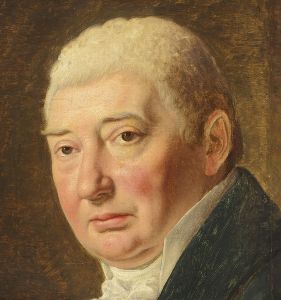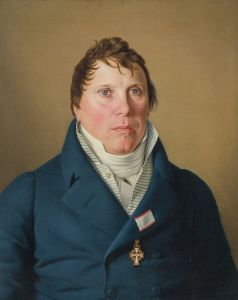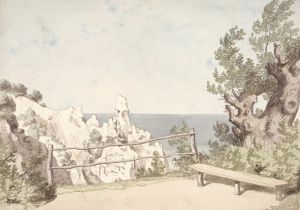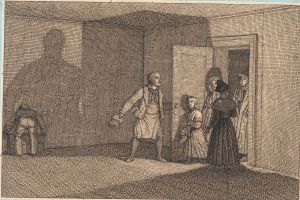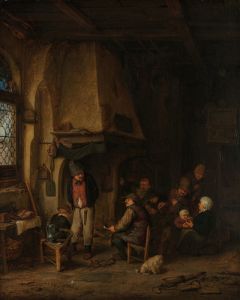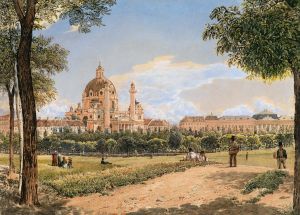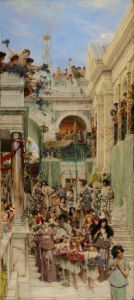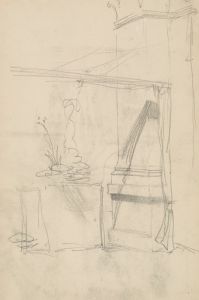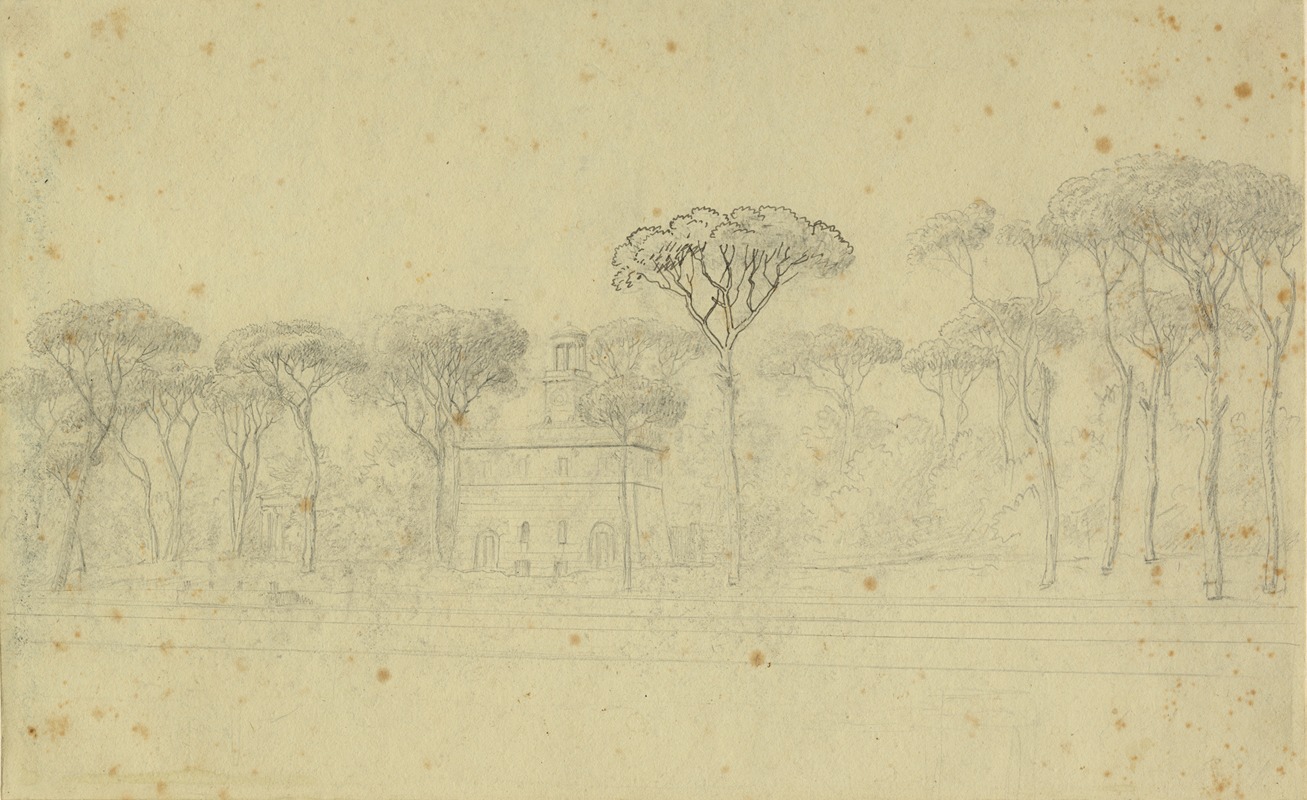
Pinier i villa Borgheses have
A hand-painted replica of Christoffer Wilhelm Eckersberg’s masterpiece Pinier i villa Borgheses have, meticulously crafted by professional artists to capture the true essence of the original. Each piece is created with museum-quality canvas and rare mineral pigments, carefully painted by experienced artists with delicate brushstrokes and rich, layered colors to perfectly recreate the texture of the original artwork. Unlike machine-printed reproductions, this hand-painted version brings the painting to life, infused with the artist’s emotions and skill in every stroke. Whether for personal collection or home decoration, it instantly elevates the artistic atmosphere of any space.
Christoffer Wilhelm Eckersberg, often referred to as the father of Danish painting, created the artwork "Pinier i villa Borgheses have" (Pine Trees in the Villa Borghese Gardens) during his time in Italy. Eckersberg was born on January 2, 1783, in Blåkrog, Denmark, and he played a pivotal role in the development of the Danish Golden Age of painting. His works are known for their meticulous attention to detail and clarity, often reflecting his academic training and his dedication to capturing the essence of his subjects.
Eckersberg traveled to Italy in 1813, a journey that was crucial for his artistic development. Italy, with its rich artistic heritage and inspiring landscapes, provided Eckersberg with ample opportunities to refine his skills and broaden his artistic horizons. During his stay, he was particularly influenced by the classical art and architecture of Rome, as well as the natural beauty of the Italian countryside.
"Pinier i villa Borgheses have" is one of the many works Eckersberg created during his Italian sojourn. The painting depicts the serene and picturesque gardens of the Villa Borghese, a large landscape garden in Rome that was originally developed by the Borghese family in the early 17th century. The villa and its gardens have long been a source of inspiration for artists due to their classical beauty and tranquil ambiance.
In this painting, Eckersberg captures the tall, majestic pine trees that are characteristic of the Villa Borghese gardens. His use of light and shadow, combined with his precise brushwork, brings out the texture and form of the trees, creating a sense of depth and realism. The composition is carefully balanced, with the trees forming a natural frame that draws the viewer's eye into the scene. The tranquil atmosphere of the gardens is conveyed through the soft, diffused light and the harmonious arrangement of natural elements.
Eckersberg's attention to detail and his ability to capture the subtleties of light and color are evident in this work. The painting reflects his academic background and his commitment to portraying nature with accuracy and sensitivity. It also demonstrates his ability to infuse his landscapes with a sense of calm and timeless beauty.
After returning to Denmark, Eckersberg continued to be a central figure in the Danish art scene. He became a professor at the Royal Danish Academy of Fine Arts and influenced a generation of Danish artists. His works, including "Pinier i villa Borgheses have," remain significant examples of his contribution to landscape painting and his role in the Danish Golden Age.
Today, Eckersberg's paintings are held in high regard and can be found in various museums and collections, including the National Gallery of Denmark. "Pinier i villa Borgheses have" stands as a testament to his skill as a landscape painter and his ability to capture the serene beauty of the natural world.






